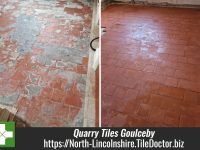I was asked to look at this Quarry tiled floor at a property in the village of Goulceby near Louth for a client who was renovating their kitchen. Previously it had been covered with lino and they lifted that to reveal the tiles underneath. Realising this floor was original to the property they decided to see if it could be restored and hence contacted Tile Doctor.
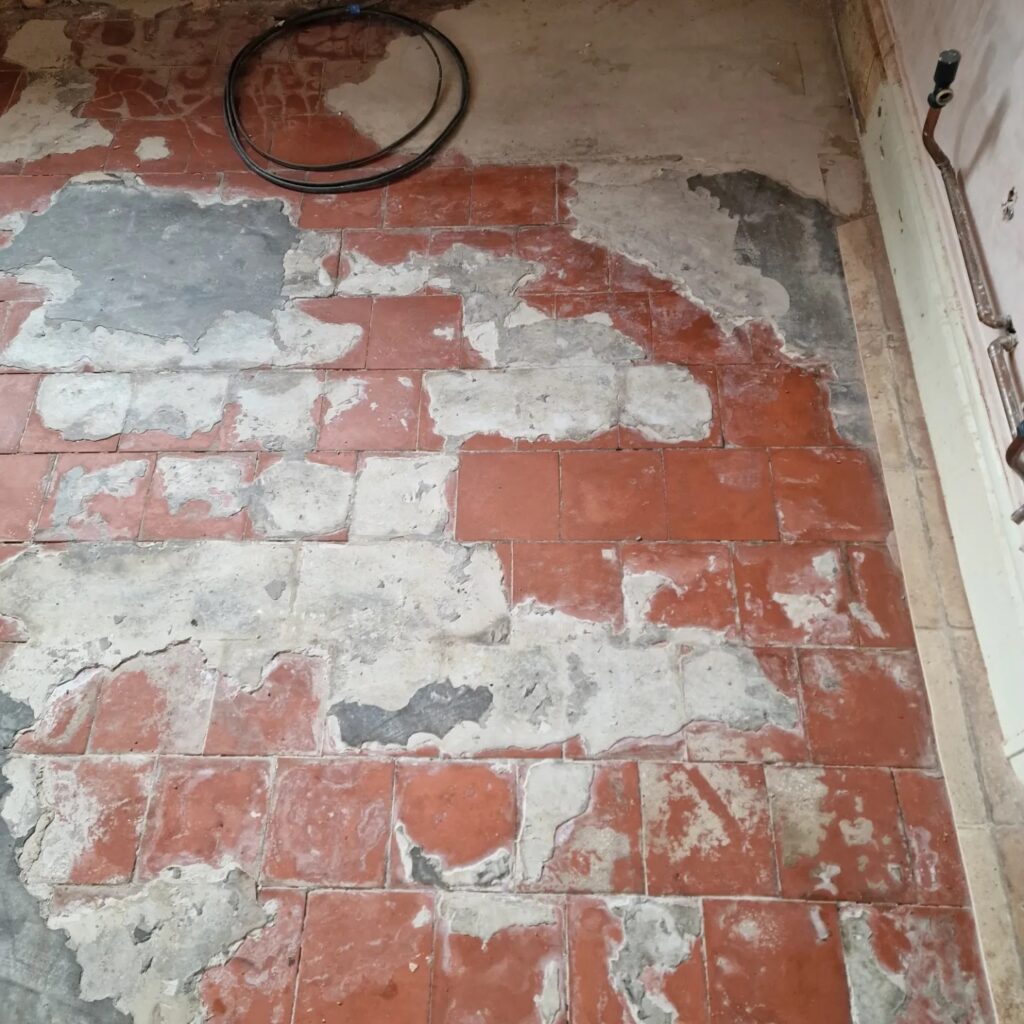
I went over to survey the Quarry tiles and could see there was quite a lot of cement screed staining on the tiles, a lot of which was quite thick. The installers of the linoleum will have done this to provide a completely level base. Although difficult I knew it could be removed and provided the client with a quote for restoring the floor. This was accepted, and a date scheduled for the work to commence.
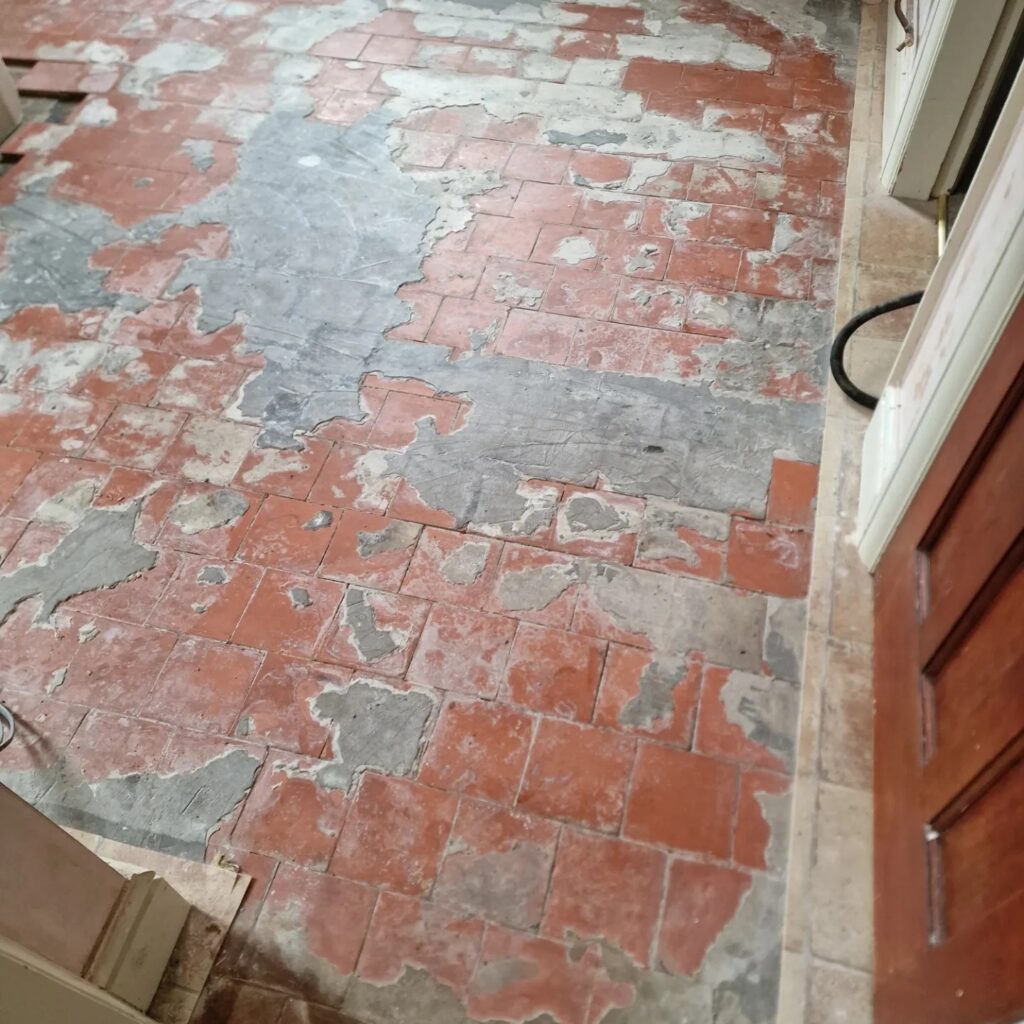
Cleaning a Quarry Tiled Kitchen Floor
From experience I know the quickest way to remove old screed is to soften it with a steamer and then scrape it off carefully with a large scraper. It is not quick, and the work is quite laborious, but it is effective, in fact removing the screed took the best part of two days.
With the bulk of the screed removed I gave the floor an acid wash using Tile Doctor Grout Clean-up, this product breaks down mineral based contaminates such as the remnants of the cement screed and old grout smears. Being acidic it will also neutralise alkaline salts that may have built up in the tiles. Old floors like this are designed to breathe and the previous coverings would have prevented that. This can lead to moisture being trapped under the floor where it can potentially reach out to the walls and cause rising damp. The Tile Doctor Grout Clean-up was scrubbed in with a mechanical buffer and then the soiling was rinsed off and extracted with a wet vacuum.
I then gave the floor a deep clean using Tile Doctor Remove and Go to get rid of any old sealants and dirt trapped in the tiles itself. I used the previous method of scrubbing with the buffer followed by rinsing and extracting. Last step on day two was to spot treat any remaining problem areas by hand until I was satisfied the floor was as clean as it possible.
I used a lot of water during those two days so despite removing as much of it as possible with the wet vacuum I was concerned it may take a long time to dry out completely, so I left a couple of dehumidifiers in place for a further two days before I returned to apply the sealer.
Sealing a Quarry Tiled Kitchen Floor
On my return I checked the moisture levels of the tiles with a damp meter, taking readings from different parts of the floor to confirm it was dry. All was well so I set about applying the first of two coats of Tile Doctor Colour Grow. This is a breathable colour enhancing impregnating sealer that works by soaking into clay tiles, occupying the pores and ensuring dirt remains on the surface where it is easily cleaned away.
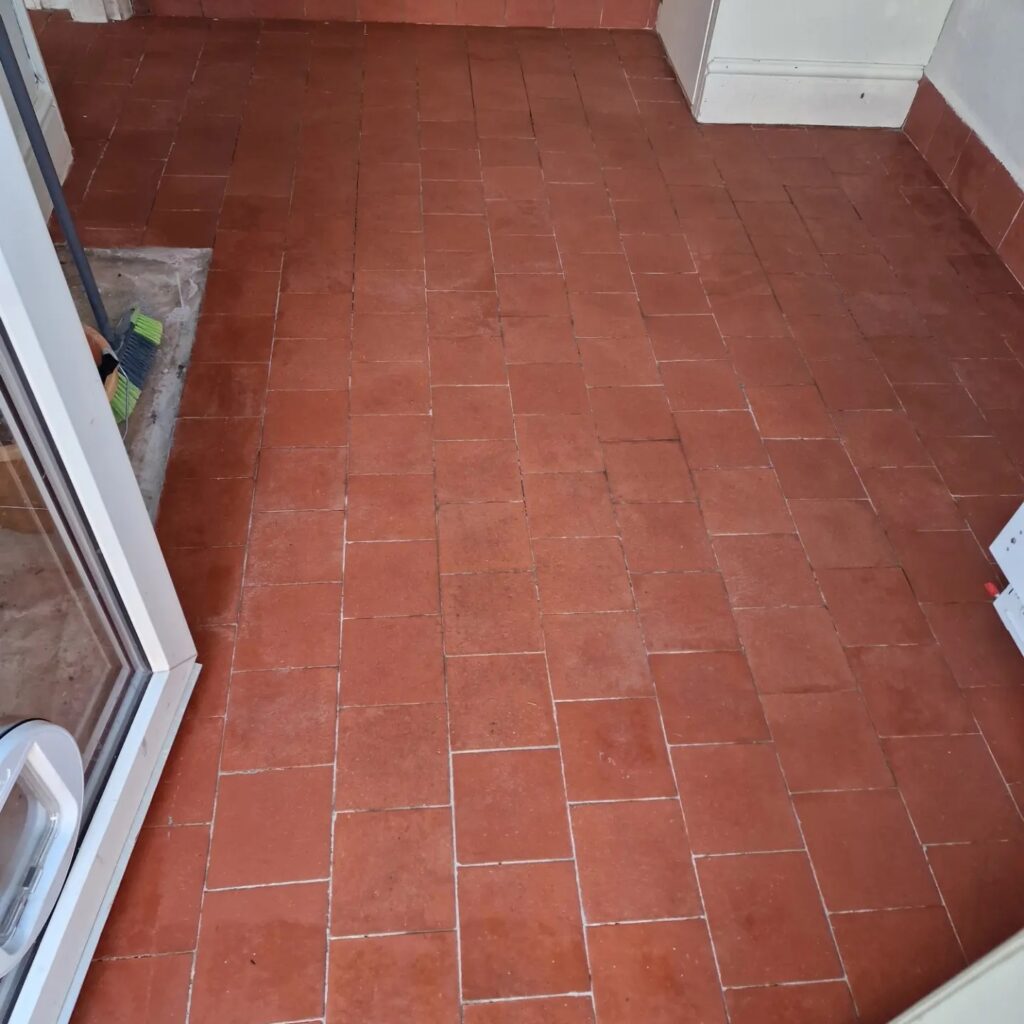
Once complete the Quarry tiled floor was transformed and as you can imagine my client was very happy with the result. They commented that they really didn’t think a tiled floor in this condition could be restored but figured it would be worth giving it a go.
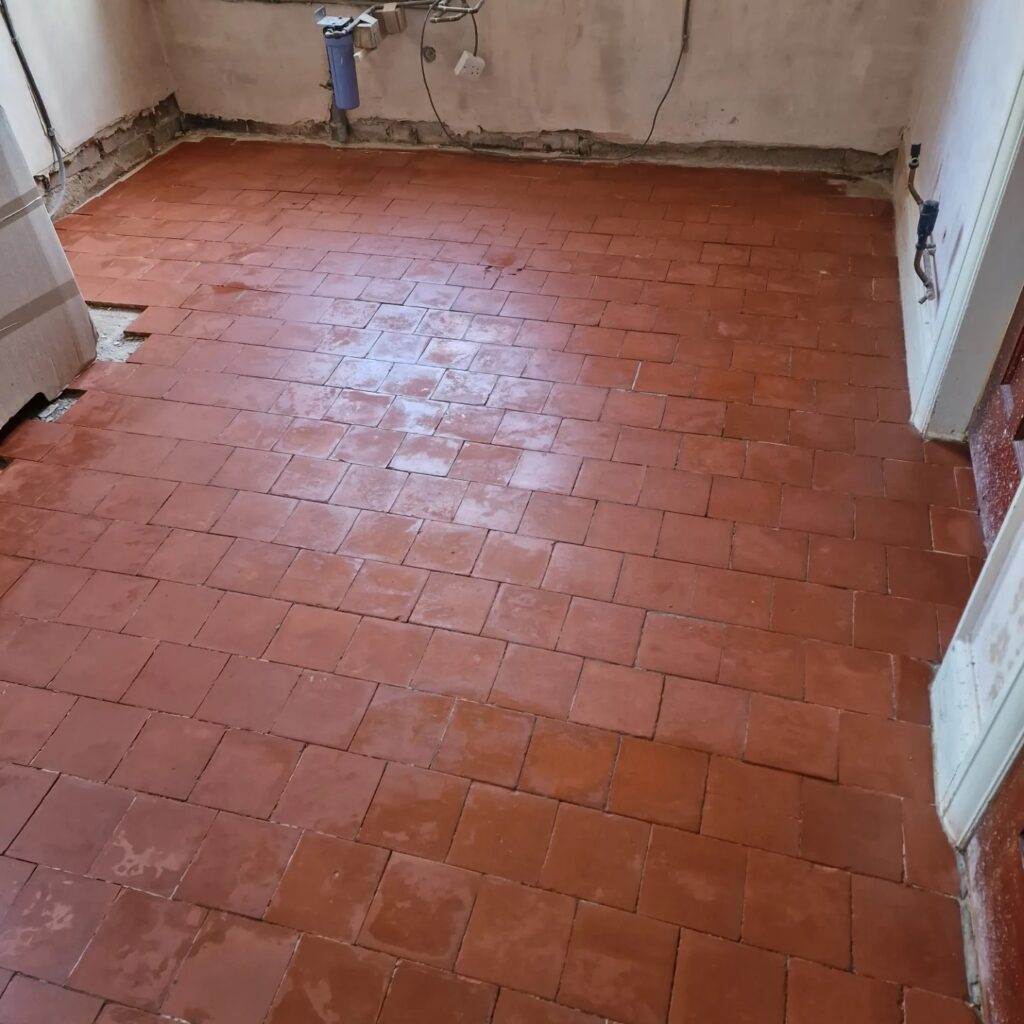
Before leaving I took time to discuss aftercare, and recommended they use a sealer safe Tile Cleaning product such as Tile Doctor Neutral Tile Cleaner.
Source: Quarry Tiled Floor Tile Cleaning and Renovation Service in Goulceby

